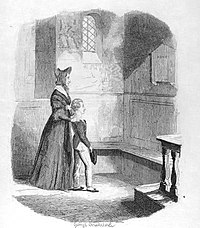
Charles John Huffam Dickens was an English novelist and social critic who created some of the world's best-known fictional characters, and is regarded by many as the greatest novelist of the Victorian era. His works enjoyed unprecedented popularity during his lifetime and, by the 20th century, critics and scholars had recognised him as a literary genius. His novels and short stories are widely read today.

Oliver Twist; or, The Parish Boy's Progress, is the second novel by English author Charles Dickens. It was originally published as a serial from 1837 to 1839 and as a three-volume book in 1838. The story follows the titular orphan, who, after being raised in a workhouse, escapes to London, where he meets a gang of juvenile pickpockets led by the elderly criminal Fagin, discovers the secrets of his parentage, and reconnects with his remaining family.

The Posthumous Papers of the Pickwick Club was the first novel by English author Charles Dickens. Because of his success with Sketches by Boz published in 1836, Dickens was asked by the publisher Chapman & Hall to supply descriptions to explain a series of comic "cockney sporting plates" by illustrator Robert Seymour, and to connect them into a novel. The book became a publishing phenomenon, with bootleg copies, theatrical performances, Sam Weller joke books, and other merchandise. On its cultural impact, Nicholas Dames in The Atlantic writes, "'Literature' is not a big enough category for Pickwick. It defined its own, a new one that we have learned to call "entertainment". Published in 19 issues over 20 months, the success of The Pickwick Papers popularised serialised fiction and cliffhanger endings.

Nicholas Nickleby, or The Life and Adventures of Nicholas Nickleby, is the third novel by Charles Dickens, originally published as a serial from 1838 to 1839. The character of Nickleby is a young man who must support his mother and sister after his father dies.

The Charles Dickens Museum is an author's house museum at 48 Doughty Street in King's Cross, in the London Borough of Camden. It occupies a typical Georgian terraced house which was Charles Dickens's home from 25 March 1837 to December 1839.
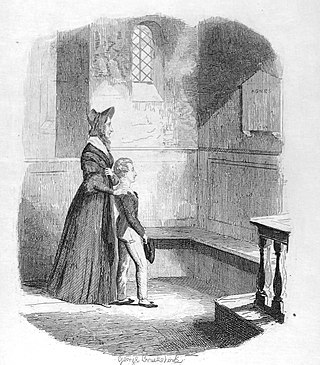
Rose Fleming Maylie is a fictional character in Charles Dickens' 1838 novel Oliver Twist who is eventually discovered to be the title character's maternal aunt. Though she plays a significant role in the novel, she is often omitted from dramatisations of the story.

Victorian literature is English literature during the reign of Queen Victoria (1837–1901). The 19th century is considered by some to be the Golden Age of English Literature, especially for British novels. It was in the Victorian era that the novel became the leading literary genre in English. English writing from this era reflects the major transformations in most aspects of English life, from scientific, economic, and technological advances to changes in class structures and the role of religion in society. The number of new novels published each year increased from 100 at the start of the period to 1000 by the end of it. Famous novelists from this period include Charles Dickens, William Makepeace Thackeray, the three Brontë sisters, Elizabeth Gaskell, George Eliot, Thomas Hardy, and Rudyard Kipling.
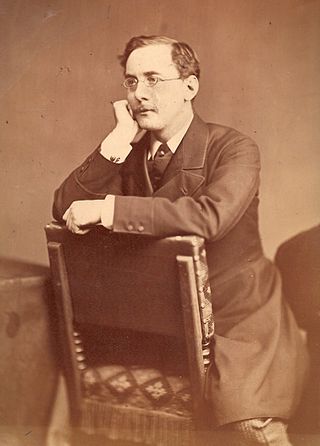
Charles Culliford Boz Dickens, better known as Charles Dickens Jr., was the first child of the English novelist Charles Dickens and his wife Catherine. A failed businessman, he became the editor of his father's magazine All the Year Round, and a writer of dictionaries. He is now most remembered for his two 1879 books, Dickens's Dictionary of London and Dickens's Dictionary of the Thames.
The bibliography of Charles Dickens (1812–1870) includes more than a dozen major novels, many short stories, several plays, several non-fiction books, and individual essays and articles. Dickens's novels were serialized initially in weekly or monthly magazines, then reprinted in standard book formats.

Oliver Twist is the title character and protagonist of the 1838 novel Oliver Twist by Charles Dickens. He was the first child protagonist in an English novel.
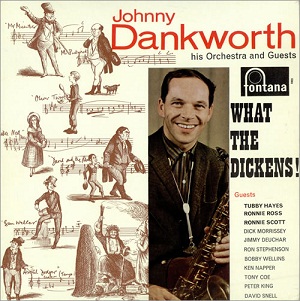
What the Dickens! is a 1963 recording by Johnny Dankworth, accompanied by his orchestra and guests, some of the leading UK jazz musicians of the day. It is a suite based on characters and scenarios associated with Charles Dickens. It was recorded in London on 29 and 31 July, 7 August and 4 October 1963, and released as a vinyl album.

Georgina Hogarth was the sister-in-law, housekeeper, and adviser of English novelist Charles Dickens and the editor of three volumes of his collected letters after his death.
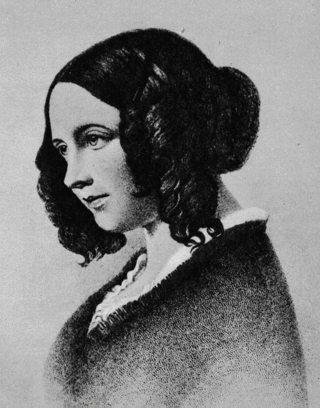
Catherine Thomson "Kate" Dickens was the wife of English novelist Charles Dickens, the mother of his ten children, and a writer of domestic management.

Mary "Mamie" Dickens was the eldest daughter of the English novelist Charles Dickens and his wife Catherine. She wrote a book of reminiscences about her father, and in conjunction with her aunt, Georgina Hogarth, she edited the first collection of his letters.

Dickens of London is a 1976 television miniseries from Yorkshire Television based on the life of English novelist Charles Dickens. Both Dickens and his father John were played by British actor Roy Dotrice. The series was written by Wolf Mankowitz and Marc Miller. In the United States, the series was shown in 1977.
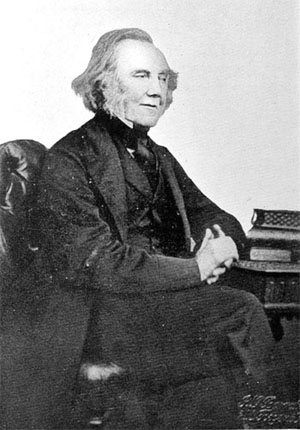
George Hogarth WS was a Scottish lawyer, newspaper editor, music critic, and musicologist. He authored several books on opera and Victorian musical life in addition to contributing articles to various publications.

Agnes Wickfield is a character of David Copperfield, the 1850 novel by Charles Dickens. She is a friend and confidante of David since his childhood and at the end of the novel, his second wife. In Dickens' language, she is the "real heroine" of the novel.
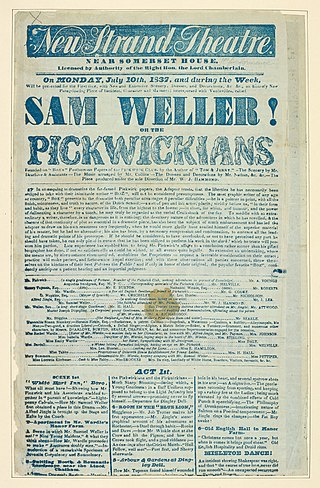
Samuel Weller, or, The Pickwickians is an 1837 comedy in three acts adapted from Dickens's novel The Pickwick Papers by William Thomas Moncrieff. It was first performed at the Royal Strand Theatre in London on 17 July 1837.
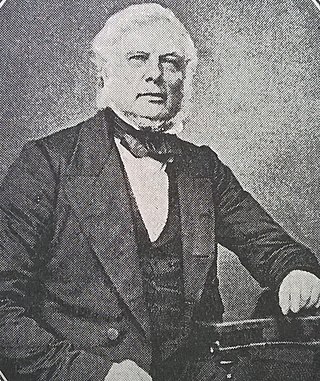
William Bradbury was an English printer and publisher. He is known for his work as a partner from 1830 in Bradbury and Evans, who printed the works of a number of major novelists such as Charles Dickens and William Makepeace Thackeray, as well as leading periodicals such as Punch, which they also owned.



